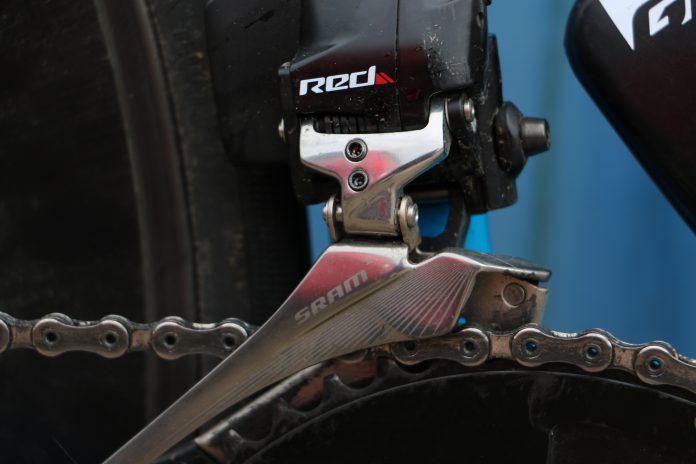One of the tech giants of the bicycle world, SRAM have been constantly pushing the boundaries of the way bikes are engineered since 1987. Based in Chicago, Illinois, United States, the company have revolutionised some of the technologies found in cycling.
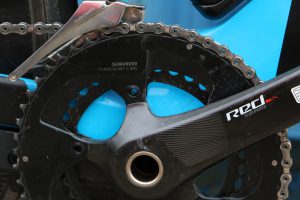 The name comes from an Acronym comprising of it’s founders names, Sam, Ray & Scott. (Ray is the middle name of Stan Day, the company’s first CEO). Having developed some market leading technology such as SRAM red tap, Grip Shift, DoubleTap, 1×11 mountain and road drivetrains and Eagle (1×12), SRAM are right at the forefront of the industry when it comes to components.
The name comes from an Acronym comprising of it’s founders names, Sam, Ray & Scott. (Ray is the middle name of Stan Day, the company’s first CEO). Having developed some market leading technology such as SRAM red tap, Grip Shift, DoubleTap, 1×11 mountain and road drivetrains and Eagle (1×12), SRAM are right at the forefront of the industry when it comes to components.
— YOUR GUIDE TO CYCLING KNEE PAIN —
Growth:
The company has grown both organically and through acquisition. The company manufactures the majority of their components in house and have factories all over the world in places such as Taiwan, China, Portugal and the U.S.
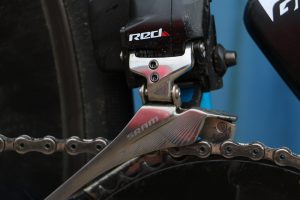 Through the years SRAM has added other companies to the portfolio SRAM such as component makers Zipp, QUARQ, RockShox, Avid and Truativ, from the former Fichtel & Sachs, Sachs-Huret. This put them truly in contention at the forefront of the component marketplace. SRAM is an example of the way the market has developed with component companies offer the frame manufacturers a “complete package”. Supplying all or most of the finishing kit to build a complete bike.
Through the years SRAM has added other companies to the portfolio SRAM such as component makers Zipp, QUARQ, RockShox, Avid and Truativ, from the former Fichtel & Sachs, Sachs-Huret. This put them truly in contention at the forefront of the component marketplace. SRAM is an example of the way the market has developed with component companies offer the frame manufacturers a “complete package”. Supplying all or most of the finishing kit to build a complete bike.
The Beginning:
In 1988 SRAM, a small start up outfit introduce the Grip Shift gear change method to the road cycling market. This was then modified and introduced the MTB scene in just 3 years later in 1991.
— HOW TO IMPROVE YOUR CYCLING BASE ENDURANCE —
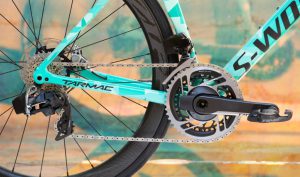 Shortly before this was introduced in 1991, SRAM sued it’s rival component giant, Shimano for unfair business practices. Shimano were offering a 10% discount to all companies that offered a Shimano only drivetrain. This discount was so large, that very few bicycle manufacturers would overlook the discount and specify a grip shift set up. SRAM received an out of court payment from Shimano to settle the case for an undisclosed amount of money. But more importantly for the marketplace, all the Shimano competitors won the right to compete.
Shortly before this was introduced in 1991, SRAM sued it’s rival component giant, Shimano for unfair business practices. Shimano were offering a 10% discount to all companies that offered a Shimano only drivetrain. This discount was so large, that very few bicycle manufacturers would overlook the discount and specify a grip shift set up. SRAM received an out of court payment from Shimano to settle the case for an undisclosed amount of money. But more importantly for the marketplace, all the Shimano competitors won the right to compete.
This settlement allowed dramatic growth for the SRAM company and it increased sales by a significant margin. In 1995 SRAM brought “ESP” to the market which was their first rear derailleur for the MTB scene to work with their grip shifts. A 1:1 cable actuation ratio that allowed for more cable contamination. A couple of years later SRAM made it’s first acquisition, Sachs. This merge came complete with some of the markets best metallurgists and engineers, along with a complete chain & internally geared hub production.
Moving Forward:
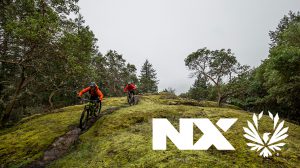 Redesigning the rear derailleur, by 2001 SRAM was ready to release it’s second edition and turn a corner for the future of the companies design. The first of the X.O line. Made from forged aluminium it came with a trigger shift option for SRAM.
Redesigning the rear derailleur, by 2001 SRAM was ready to release it’s second edition and turn a corner for the future of the companies design. The first of the X.O line. Made from forged aluminium it came with a trigger shift option for SRAM.
In 2002 RockShox defaulted on a loan from SRAM and this led to the acquisition of the company. It was 3 years before SRAM released any new technologies from the merge but this came with a new fork damper technology with the name “motion control”. This meant that the user could adjust the compression and rebound of the suspension offering a much fitter ride. A version of this technology is still available from RockShox on the current marketplace.
— WHY YOU NEED A NEW BIKE FIT —
Next in line to add the the portfolio was Avid in 2004. Another step in the chain to compete with Shimano, SRAM could now produce popular hydraulic disc brakes. Along with the acquisition of Truvativ, SRAM could now produce chainrings, cranks and bottom brackets. This was the final link in the chain to sell a complete package to bike manufacturers.
Back to the Road:
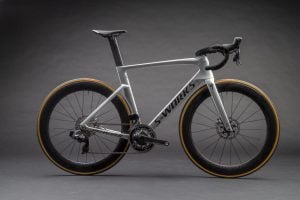 With the beginnings in the road bike industry, SRAM had left this market in 1993 to accommodate for the growth in the MTB market. This effort focussed their sales through the turn of the millennium but by 2004, SRAM had planned a come back. With the engineering and design of two new road based group sets, force and rival, SRAM was back. In 2006 these were released and race in the Tour de France by 2007. Using SRAM’s new shifting technology called DoubleTap, it was the first time SRAM allowed a rider to shift in both directions using a single shifter paddle. This technology is still found in the SRAM Red today.
With the beginnings in the road bike industry, SRAM had left this market in 1993 to accommodate for the growth in the MTB market. This effort focussed their sales through the turn of the millennium but by 2004, SRAM had planned a come back. With the engineering and design of two new road based group sets, force and rival, SRAM was back. In 2006 these were released and race in the Tour de France by 2007. Using SRAM’s new shifting technology called DoubleTap, it was the first time SRAM allowed a rider to shift in both directions using a single shifter paddle. This technology is still found in the SRAM Red today.
In 2007 SRAM acquired Zipp before releasing the market leading SRAM Red in 2008. These group sets were continually developed until 2011 when SRAM acquired crank based power company Quarq. In 2012, power meters were available in the high end Red road group set. Still focussing on the MTB market, this year also saw the company introduce their wide range XX1 MTB group set. The 1×11 shifting used a 10-42 cassette and a patented single front ring without a chain guide. The technologies used in this group set were cutting edge and took many years of engineering.
— USING CAFFEINE TO BOOST CYCLING PERFORMANCE —
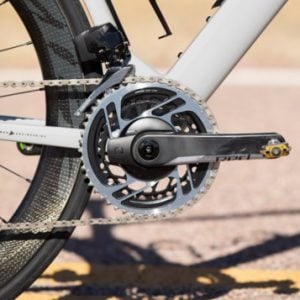 This design was adapted by 2014 and seen on the Cyclocross bikes as the force CX1. Expanded in 2015 there were no limits to the use of the system appear on road, fitness and TT bikes.
This design was adapted by 2014 and seen on the Cyclocross bikes as the force CX1. Expanded in 2015 there were no limits to the use of the system appear on road, fitness and TT bikes.
Changing Technology:
In August 2015, SRAM went wireless. This was a real game changer on the road bike market. Derailleurs with self-contained batteries could shift using wireless signals sent from the levers. Fast set up, precise shifting and low maintenance made this and instant hit. Limitless in the application SRAM Red eTap is still one of the best systems available, and has seen a redesign for 2019. The hydraulic disc brake version of the system came out in May 2016 with a careful lever design and reach adjustment.
This release was complimented by the 1×12 Eagle drivetrain in both X01 and XX1 versions. The first year of public availability came with a phenomenal amount of rewards and high end reviews for the company. A 500% gear range is comparable to a lot of the 2x systems available on the market today and it’s simplicity and versatility is unparalleled.
2019 has seen three completely new wireless electronic group sets that are already making a huge impact on the bike market. All of the systems come with a new ACS mobile app to customise and personalise the systems. Available with BLE connectivity, this has been rolled out to both road and MTB options.
The roads 12 speed cassette offers a much wider gear range and the engineering to make it possible is incredibly innovative. Smaller steps, power meter compatability, a fluid damper and both 2x and 1x options are like nothing seen before on the road market place.
The MTB groups can sync with the SRAM sister brand RockShox dropper post to reassign all the button functions for a completely customised ride. The versatility of these wireless systems allows them to be used in any combinations.
— SRAM RED eTAP AXS – NEW INNOVATION —
We’re very excited to track the future of the company to see how they keep the cycling industry moving forward with completely original and innovative designs. Thinking outside the box utilising some of the worlds best engineering minds keeps cycling moving in the direction we need.

